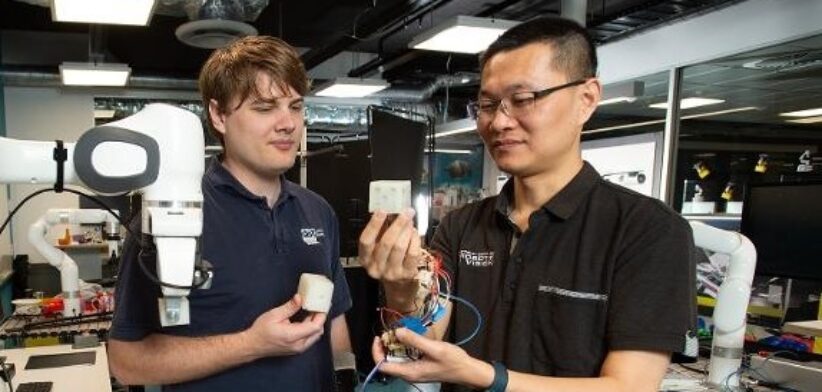Researchers are working on creating ‘gentle’ robots capable of understanding their own strength.
A team from QUT, which recognised that grasping objects was difficult for robots, have built a smart object that can measure a robot’s squeezing force.
Dr Fangyi Zhang, from the QUT Centre for Robotics, said robots needed to pick up all sorts of objects, hold them firmly, so they didn’t drop, but also to not damage them by squeezing too hard.
“To find out how hard the robot is squeezing an object we built a smart object that can measure this squeezing force, how hard it is squeezed and where,” Dr Zhang said.
He said this was valuable in relation to objects like fruit, or other delicate items, where precise force application was critical to prevent slippage or damage.
Research assistant Maceon Knopke said the research developed a new method to assess such compliant robotic grasping by using special sensorised objects that could feel and measure how much force was applied.
“A test design was proposed to use sensors and magnets to measure where and how strongly something is being touched,” Mr Knopke said.
“The design demonstrated promising results, accurately detecting contact locations and applied forces during robotic grasping tasks, highlighting its potential for broader applications for grasping performance evaluation in robotics.”
Dr Zhang said the work addressed a significant challenge in robotics – measuring stress or damage to objects during handling – by providing direct assessment capabilities through innovative sensor integration.
“The findings open new avenues for developing more sensitive and accurate performance evaluation toolkits, aiding the development and improvement of robotic systems capable of handling delicate objects,” Dr Zhang said.
“Potential applications span various industries including agriculture, healthcare, and manufacturing, where robotic systems must manage fragile items safely.”








